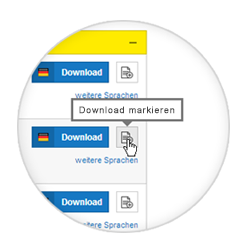Getting an accurate level measurement in vessels of hotel soap
Condensation and sticky buildup
The process begins with a liquefied soap base that solidifies when it cools below 85˚F. The material is typically heated to at least 180˚F when the process is running. During normal operation, vapor is produced, and it condenses on the inner surface of the roof of the tank. During cleanings, operators use hot steam to purge lines to and from the vessel.
A competitor’s 26 GHz radar sensor was having issues reading a level measurement when any amount of steam was present in the tank. On top of this, cleanout processes typically caused the soap to bubble up and leave a residue on the sensor, causing further issues. Inaccurate and unknown level measurements led to dangerous work conditions with the risk of the hot, sticky liquid overflowing.
Measuring through the condensation
 The steam and the soapy buildup on the radar sensor were the first two big hurdles to overcome in this application. Fortunately, the 80 GHz VEGAPULS 64 has a reputation for surmounting both of these difficulties with ease. VEGA offered a free trial of the VEGAPULS 64 to prove the sensor would work in the application. In this instance, a VEGADIS 81 was added, so operators could safely view the level away from the hot steam purging from the 25’ tall vessel. The radar was then set up using the VEGA Tools App via Bluetooth.
VEGAPULS 64 Free Trial
The steam and the soapy buildup on the radar sensor were the first two big hurdles to overcome in this application. Fortunately, the 80 GHz VEGAPULS 64 has a reputation for surmounting both of these difficulties with ease. VEGA offered a free trial of the VEGAPULS 64 to prove the sensor would work in the application. In this instance, a VEGADIS 81 was added, so operators could safely view the level away from the hot steam purging from the 25’ tall vessel. The radar was then set up using the VEGA Tools App via Bluetooth.
VEGAPULS 64 Free Trial A safer, more reliable measurement
Once they began using the VEGAPULS 64, KIK Custom Products discovered they were getting an accurate level reading in their soap vessel for the first time in a long time. Level readings were accurate throughout the process, even with varying amounts of steam, because the sensor is immune to condensation and build-up on the antenna. Additionally, the sensor has a higher dynamic range, so it was able to detect a low return signal coming back from the turbulent surface.
The VEGADIS 81 and the VEGA Tools App were able to provide two different ways for operators to view the level in the vessel at a safe distance away from the hot steam. Prior to this, operators would have to put on safety equipment – a full protective suit – just to get a look at the sensor and see what was happening. Upon seeing proof the operation in one vessel was running more safely and efficiently, KIK Custom Products purchased instruments for two more vessels running the same process.
Cleaning up unreliable measurements
Related products
Export this article
Download as PDFShare this article
Comments ({{comments.length}})
{{getCommentAuthor(comment, "Anonymous")}} {{comment.timestamp | date : "dd.MM.yyyy HH:mm" }}
{{comment.comment}}





